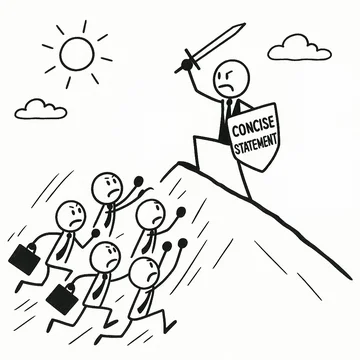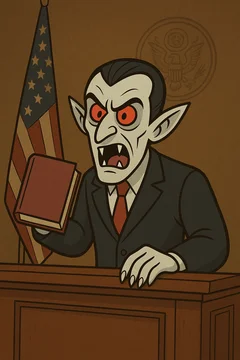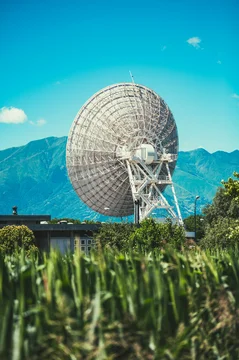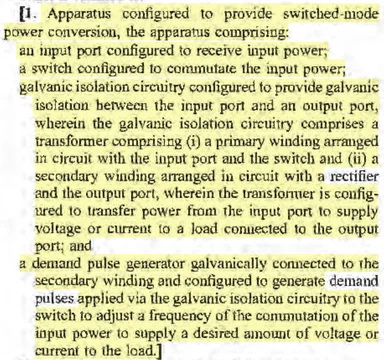
Judge Williams issued a noteworthy SJ opinion last week in Cisco Systems, Inc. v. Ramot at Tel Aviv University, Ltd., C.A. No. 21-1365-GBW (D. Del.).
Cisco involves a DJ action where the accused infringer is challenging the validity of a patent based on the pre-AIA § 102 on sale bar, alleging that a a third party sold a product that embodied the claimed method more than one year before the patent application.
The patentee seemingly agreed with the basic facts, but moved for summary judgment of no invalidity on the theory that the the sales were "secret."
What does "secret" mean here? At least for the purposes of this motion, the parties assume that the prior art products embody the invention, but that a person purchasing the products couldn't understand their features based on their circuitry. The documents describing the as-sold product were also secret, other than two press releases.
The patentee's theory is that prior art doesn't qualify under the on sale bar if a buyer cannot figure out how the relevant portions of the product work from the product itself.
The Court didn't go for that. It held that whether the product is "secret" or not does not matter—the relevant question is whether it embodies the claimed elements:
The Federal Circuit has addressed this issue in J.A. LaPorte, Inc. v. Norfolk Dredging Co., 787 F.2d 1577 (Fed. Cir. 1986). In J.A. LaPorte, the Federal Circuit held that secret sales by a third party can implicate § 102(b)'s on-sale bar. 787 F.2d at 1583. In determining whether the sale of a product implicated the on-sale bar, the Federal Circuit made clear that "the question is not whether the sale, even a third-party sale, 'discloses' the invention at the time of the sale, but whether the sale relates to a device that embodies the invention." J.A. LaPorte, 787 F.2d at 1583 (emphasis in original).
. . .
Secret sales by third parties, even sales where there is no disclosure of the claimed invention, can trigger § 102(b)'s on-sale bar if the sold product embodies the claimed invention.
Cisco Systems, Inc. v. Ramot at Tel Aviv University, Ltd., C.A. No. 21-1365-GBW, at 4, 9-10 (D. Del. Oct. 23, 2025).
That's not surprising. I've never heard of a rule that a party can circumvent on-sale bar prior art just by arguing that the prior art product doesn't "disclose" the invention (even if it embodies it).
The Federal Circuit Has Suggested in Dicta That § 102(b)'s On-Sale Bar Only Applies to Sales by the Inventor (?!)
Interestingly, though, there is apparently dicta in two Federal Circuit opinions suggesting that the pre-AIA § 102(b) on-sale bar somehow does not apply to sales by a third party. Id. at 8-9. The specific footnote that the parties and the Court discussed is pretty straightforward:
The "on sale" provision of 35 U.S.C. § 102(b) is directed at precluding an inventor from commercializing his invention for over a year before he files his application. Sales or offers made by others and disclosing the claimed invention implicate the "public use" provision of 35 U.S.C. § 102(b).
In re Caveney, 761 F.2d 671, 675 n.5 (Fed. Cir. 1985). That's a 1985 case, but the same language was repeated verbatim as recently as 2010. ResQNet.com, Inc. v. Lansa, Inc, 594 F.3d 860, 866 (Fed. Cir. 2010).
The text of that dicta can be read to suggest that § 102(b) simply does not apply to anyone other than the inventor of an asserted patent. That sounds pretty crazy, really, given that the text of the statute says nothing of the sort:
(b) the invention was patented or described in a printed publication in this or a foreign country or in public use or on sale in this country, more than one year prior to the date of application for patent in the United States.
35 U.S.C. § 102(b) (pre-AIA). It doesn't say "on sale by the patentee."
Multiple Courts Have Apparently Held That Third-Party Sales Do Not Trigger the On-Sale Bar
Even more interestingly, it seems that multiple courts have held that the § 102(b) "on sale" bar applies only to the patentee, and that third party sales do not count unless they disclose the invention under the "public use" provision:
[T]he Court is aware that "some courts have held that a secret sale by a third party of a product that allegedly anticipates an apparatus claim that would cover the product will not trigger an on-sale bar." Robert A. Matthews, Jr., Annotated Patent Digest § 17:99.50 (2025). Schlumberger Technology Corp. v. BICO Drilling Tools, Inc., C.A. H-17-3211, 2019 WL 2450948 (S.D. Tex. June 12, 2019) is emblematic of such cases. In Schlumberger, the court held that, when sales of a product by a third party disclose the invention, such sales "should be analyzed under the public use prong," relying on the Federal Circuit's decisions in ResQNet[] . . . and In re Caveney . . . . The Schlumberger court did not address J.A. Laporte, but instead drilled down on [the] footnote in Caveney, which was quoted in ResQNet, stating "that sales "made by others and disclosing the claimed invention implicate the "public use" provision,' not the 'on-sale' bar...." 2019 WL 2450948, at *6 . . . . The court in Schlumberger went on to explain that the courts in Cavaney and RsQNet noted "that the on-sale provision "is directed at precluding an inventor from commercializing his [or her] invention for over a year before he [or she] files his [or her] application.'" . . . .
Cisco Systems, Inc., C.A. No. 21-1365-GBW, at at 8.
From a quick review of Schlumberger, it looks like it's not the only district court case that went this way—it cites others as well.
Honestly, I did not know that this line of cases existed. Crazy!
Judge Williams Pushes Back
Judge Williams, however, easily distinguished the later Federal Circuit cases as dicta in light of the earlier case, and chose not to follow the district court cases holding that § 102(b) on-sale bar art must be sold by the patentee:
This Court, however, finds that the Caveney footnote, and its repetition in [ResQNet], to be dicta. FMC Techs., Inc. v. OneSubsea IP UK Ltd., 412 F. Supp. 3d 706, 713 (S.D. Tex. 2019) ("The statement in ResQNet regarding the 'public use' provision of § 102(a)(1), like the statement in Caveney's footnote, was dicta."). . . . Caveney and RsQNet are properly distinguishable. In Caveney, the Federal Circuit was addressing the situation "where a patented method is kept secret and remains secret after a sale of the unpatented product of the method." . . . As discussed above, such a situation is distinguishable from the instant case. And although the dicta in Cavaney is repeated in [ResQNet], the Federal Circuit in [ResQNet] affirmed the lower court, not because the on-sale bar was inapplicable to third-party sales, but because "the advertised version [of the allegedly invalidating reference] did not embody all of the elements of the patented product..." Schlumberger, 2019 WL 2450948, at *6 (citing [ResQNet], 594 F.3d at 867). Because the cases relied on by the Schlumberger court are distinguishable, . . . this Court finds that Schlumberger and similar cases do not warrant granting Defendant's motion for summary judgment.
Id. at 9.
The Court denied summary judgment, and the case will go to trial on whether the prior art embodies the elements of the claim and was sold in the US.
If you enjoyed this post, consider subscribing to receive free e-mail updates about new posts.



